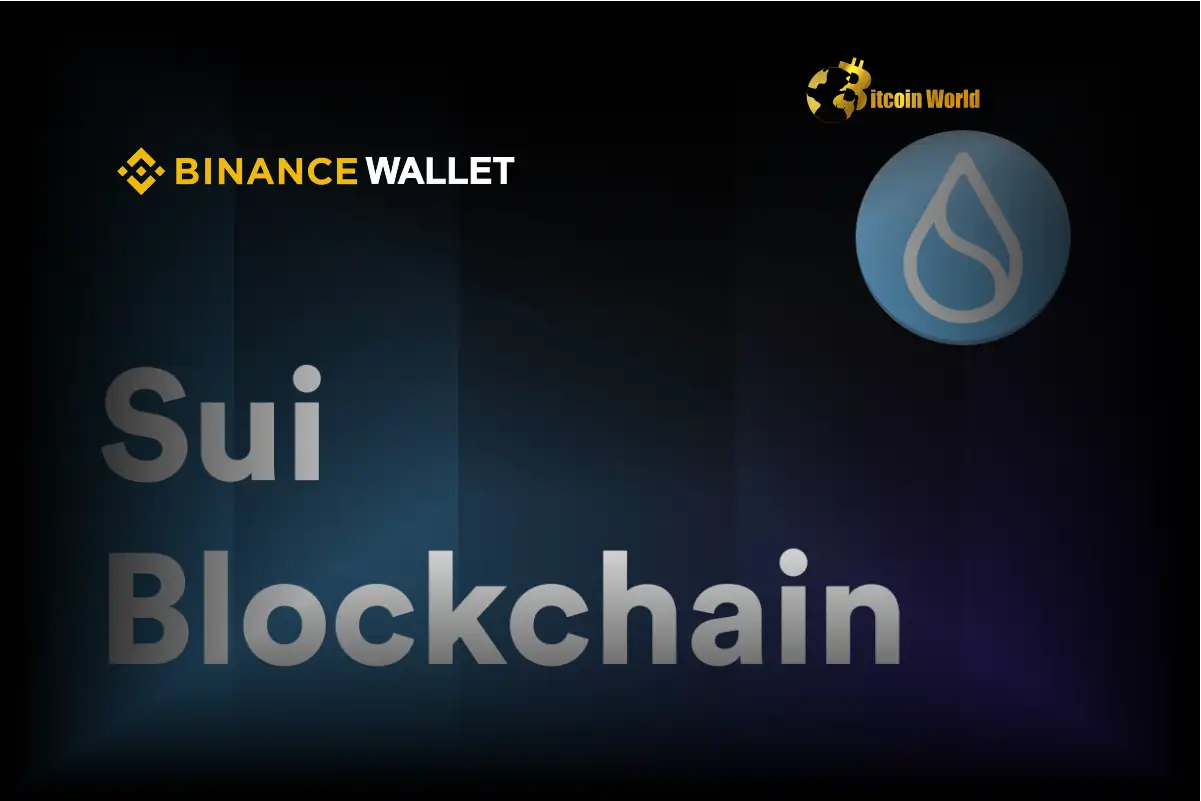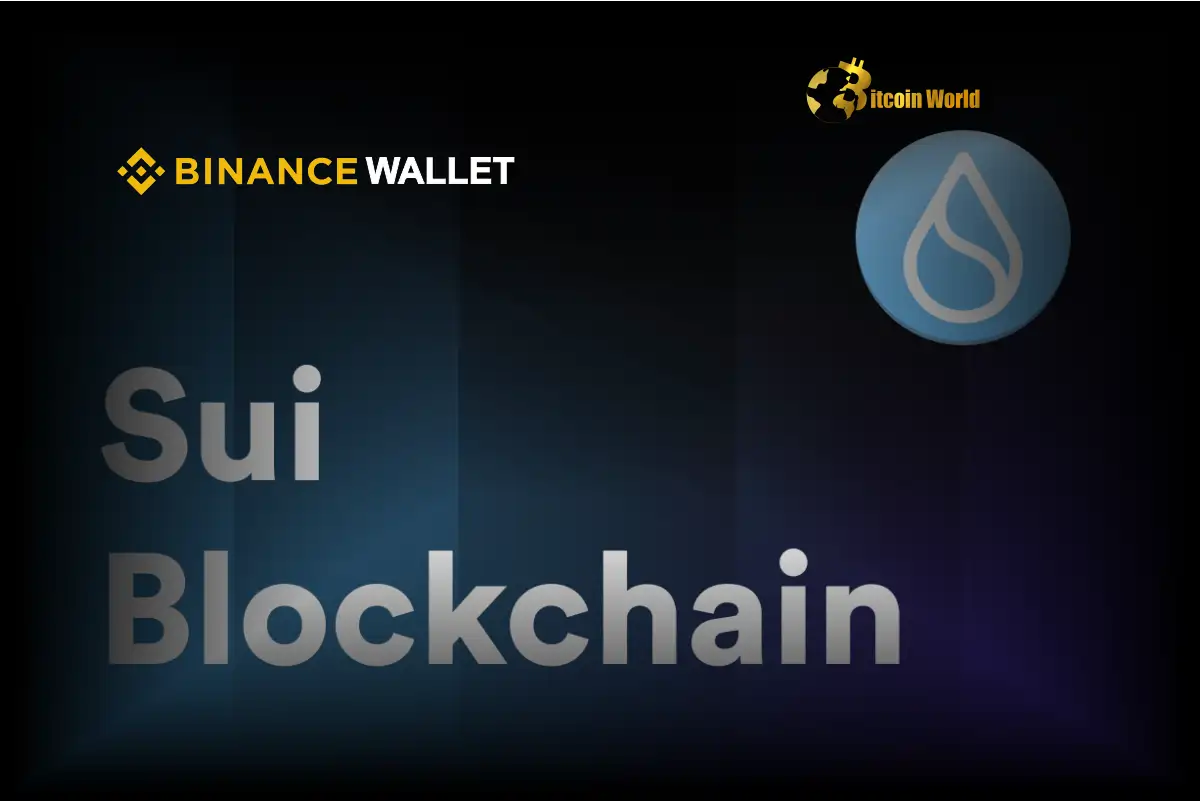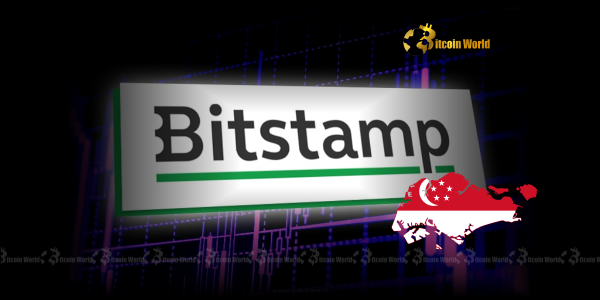BitcoinWorld

Binance Wallet Team Swiftly Addresses Sui Blockchain Balance Display Glitch
Attention, cryptocurrency users! If you’re using Binance Wallet to manage assets on the Sui blockchain, you might have noticed something concerning recently: an incorrect or missing balance display. This isn’t just a minor inconvenience; seeing an inaccurate balance for your valuable digital assets can be quite alarming. Fortunately, there’s positive news on this front: the team behind Binance Wallet has acknowledged the issue and is actively working on a resolution.
What’s Happening with the Sui Blockchain Balance Display?
The core of the problem lies in how Binance Wallet is currently displaying balances for assets held on the Sui blockchain. Users have reported seeing balances that are lower than expected, zero, or simply not updating correctly. This specific glitch seems to be confined to the display function within the wallet interface and is not indicative of any loss of funds on the underlying Sui blockchain itself. It’s a crucial distinction that helps alleviate panic among users.
The issue came to light publicly thanks to feedback from an on-chain analyst known as @BroLeonAus. Their observation and subsequent reporting on the matter prompted Binance Wallet to issue a public statement on X (formerly Twitter), confirming that they are aware of the discrepancy and that their technical team is engaged in resolving it.
Understanding this issue requires a basic grasp of how crypto wallets and blockchains interact:
- Blockchain as the Source of Truth: The actual record of your digital assets and transactions lives immutably on the Sui blockchain. This is the definitive ledger.
- Wallet as an Interface: A crypto wallet like Binance Wallet acts as your key manager and a user-friendly interface to interact with the blockchain. It queries the blockchain to show you your balance, transaction history, and allows you to initiate transfers.
- Display Issues: Sometimes, the process of querying the blockchain or presenting that data within the wallet interface can encounter temporary technical difficulties, leading to incorrect display information, even if the underlying blockchain data is accurate. This is precisely what appears to be happening here.
Why Does an Incorrect Balance Display Matter for Crypto Wallet Users?
While the funds are safe on the Sui blockchain, an incorrect balance display in your crypto wallet can have significant consequences for users:
- User Anxiety and Mistrust: Seeing a zero or incorrect balance can cause immediate panic, leading users to believe their assets have been lost or stolen. This erodes trust in the wallet provider and the broader crypto ecosystem.
- Inability to Manage Assets: Users rely on accurate balance information to make decisions about buying, selling, transferring, or staking their assets. An incorrect display hinders their ability to effectively manage their portfolio on the Sui blockchain.
- Missed Opportunities: If a user needs to make a time-sensitive transaction but their wallet shows insufficient funds due to a display error, they could miss out on trading opportunities or fail to meet obligations.
- Support Burden: Display issues often lead to a surge in support requests from concerned users, creating a significant workload for the wallet provider’s customer service team.
This highlights the critical importance of a reliable and accurate balance display for any crypto wallet. It’s the fundamental piece of information users need to interact confidently with the blockchain.
Binance Wallet’s Response: What Does ‘Working to Resolve’ Mean?
When Binance Wallet announced they were ‘working to resolve’ the balance display issue on the Sui blockchain, it indicates that their technical team has identified the problem and is actively developing and deploying a fix. This process typically involves several steps:
- Problem Identification: Pinpointing the exact cause of the display error (e.g., an issue with their data indexer for Sui, an API glitch, a front-end bug in the wallet interface).
- Developing a Solution: Writing code or making configuration changes to correct the data retrieval or presentation process.
- Testing: Rigorously testing the fix in a controlled environment to ensure it resolves the issue without introducing new problems.
- Deployment: Rolling out the fix, which might involve a wallet update or server-side changes.
- Monitoring: Continuously monitoring the system after deployment to confirm the issue is resolved for all users.
The speed at which a team addresses blockchain issues like this is often a measure of their responsiveness and commitment to user experience. Binance’s swift acknowledgment following @BroLeonAus’s feedback is a positive sign.
Understanding Binance Wallet and the Sui Blockchain
To fully appreciate the context of this issue, let’s briefly look at the platforms involved:
Binance Wallet: This is a non-custodial crypto wallet offered by the Binance ecosystem. Unlike a custodial wallet where Binance holds your private keys (like on the main exchange), a non-custodial wallet means you have full control over your private keys. This gives you greater security and autonomy but also means you are solely responsible for keeping your keys safe. Binance Wallet supports multiple blockchains, including the Sui blockchain, allowing users to manage a variety of digital assets from one interface.
Sui Blockchain: Sui is a relatively new Layer 1 blockchain designed for high performance, low transaction costs, and parallel execution, making it suitable for applications like gaming, DeFi, and social media. It uses the Move programming language, originally developed at Meta (formerly Facebook). The Sui ecosystem has been growing, attracting developers and users, which increases the importance of reliable wallet support from major providers like Binance.
Interoperability between wallets and blockchains is complex. Wallets need to constantly sync with the latest state of each supported blockchain to accurately display user balances and transaction histories. Temporary disruptions in this syncing process or issues with the data feeds (indexers) that wallets use to quickly retrieve blockchain information are common causes of display errors.
What Should Sui Blockchain Users on Binance Wallet Do Now?
If you are a Binance Wallet user holding assets on the Sui blockchain and are experiencing the balance display issue, here is some actionable advice:
- Do Not Panic: Reiterate that this is reported as a display issue. Your assets are recorded on the immutable Sui blockchain. They are not lost from the blockchain itself.
- Verify Your Balance Externally: The best way to confirm your actual balance is to use a reputable Sui blockchain explorer (like SuiScan) and look up your wallet address. This will show you the definitive balance directly from the blockchain. Alternatively, if you use another crypto wallet that supports Sui and has your seed phrase imported, check the balance there.
- Wait for Binance’s Update: The Binance Wallet team is working on the fix. Avoid making critical decisions or multiple transactions based on the incorrect balance shown in the wallet. Wait for an official announcement from Binance that the issue is resolved.
- Stay Informed: Follow Binance Wallet’s official communication channels (like their X account) for updates on the resolution progress.
- Report if Necessary (but check for updates first): While Binance is aware, if the issue persists long after a fix is announced or if you encounter a different, potentially unrelated problem, use Binance’s official support channels.
These steps empower users by providing alternative ways to verify their asset holdings and encourage patience while the technical team addresses the underlying cause of the blockchain issues.
Preventing Future Blockchain Issues and Building Resilience
While display issues are often temporary and less severe than security breaches, they are a reminder of the technical complexities inherent in interacting with blockchains. For users and platforms alike, building resilience is key:
- For Users: Understand that temporary glitches can occur. Always verify critical information directly on the blockchain explorer. Diversify your wallet usage if possible (though be mindful of seed phrase management). Stay informed about the platforms you use.
- For Platforms (like Binance Wallet): Implement robust monitoring systems to detect discrepancies quickly. Maintain transparent communication with users when issues arise. Invest in reliable data infrastructure (indexers, APIs) to ensure accurate blockchain data is fetched and displayed. Learn from each incident to improve system stability and user experience.
Addressing blockchain issues transparently and efficiently is vital for maintaining user trust and supporting the continued growth of ecosystems like the Sui blockchain.
Conclusion: A Swift Response to a Concerning Glitch
The temporary balance display issue affecting Binance Wallet users on the Sui blockchain is a perfect example of the minor, yet impactful, technical hurdles that can arise in the world of digital assets. While seeing an incorrect balance is undoubtedly concerning, the prompt acknowledgment and action by the Binance Wallet team, spurred by community feedback from analysts like @BroLeonAus, is a reassuring sign. Users are advised to remain calm, verify their true balance via a blockchain explorer, and await the official fix from Binance. This situation underscores the importance of reliable crypto wallet functionality and transparent communication in navigating the dynamic landscape of blockchain issues.
To learn more about the latest crypto wallet trends, explore our article on key developments shaping blockchain technology institutional adoption.
This post Binance Wallet Team Swiftly Addresses Sui Blockchain Balance Display Glitch first appeared on BitcoinWorld and is written by Editorial Team





